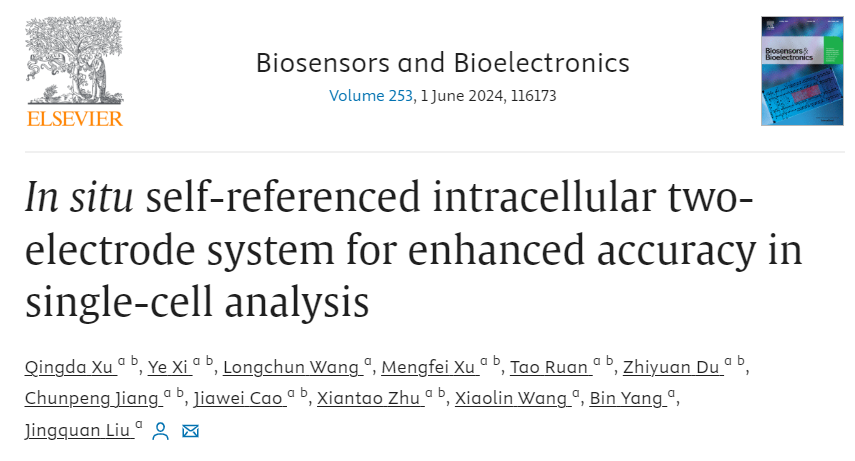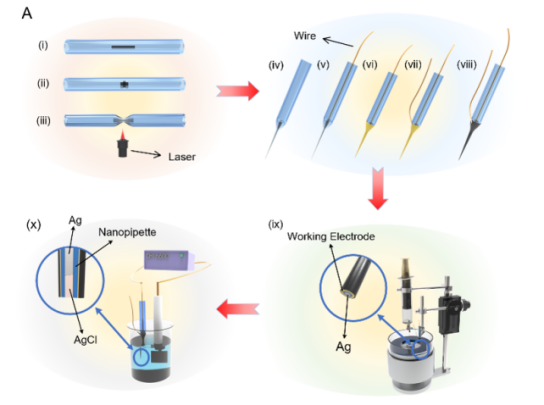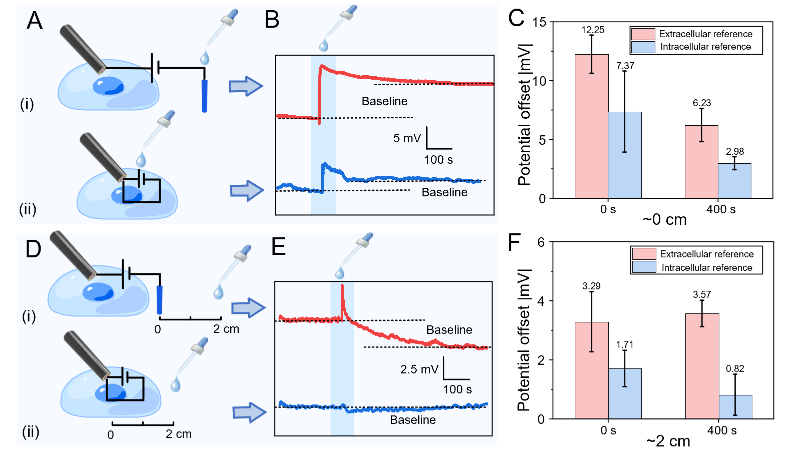- Home
- About Us
- Students
- Academics
-
Faculty
- Electrical Engineering
- Automation
- Computer Science & Engineering
- Electronic Engineering
- Instrument Science and Engineering
- Micro-Nano Electronics
- School of Software
- Academy of Information Technology and Electrical Engineering
- School of Cyber Security
- Electrical and Electronic Experimental Teaching Center
- Center for Advanced Electronic Materials and Devices
- Cooperative Medianet Innovation Center
- Alumni
-
Positions
-
Forum
News
- · Bin Dai's Team Unveils the Assembly Mechanism of β-Lactoglobulin Fibrils, Providing New Insights for the Development of Functional Nanomaterials
- · Mingyi Chen’s research group has made important progress in the field of analog-to-digital converter chips for brain-computer interface
- · Progress in the Development of Semiconductor Nanomaterials to Activate Pyroptosis for Cancer Therapy
- · Jiamiao Yang’s team achieved the high precision optoelectronic reservoir computing based on complex-value encoding
- · Significant Advancements in Resonator-Enhanced Quantum Sensing Achieved by Zenguihua's Team at the School of Sensing Science and Engineering
Prof. Jingquan Liu’s team made new progress in nanoscale brain-computer interface devices for single neurons
Recently, the team led by Prof. Jingquan Liu from the School of Electronic Information and Electrical Engineering made new progress in the field of nanoscale brain-computer interface (BCI) devices for single neurons. Their work, titled "In situ self-referenced intracellular two-electrode system for enhanced accuracy in single-cell analysis" was published in the journal Biosensors & Bioelectronics (IF: 12.6).

1. Background
Studying single neurons is crucial for understanding the underlying logic between individual brain cells and clusters. However, the conventional two-electrode system for single-cell analysis places the working and reference electrodes across the membrane so that the current conduction between the electrode systems is affected by the medium, cell membrane, and cytoplasm. With the demand for research in the field of BCI, the analysis for single neurons will be more refined. Therefore, the reliance on the conventional two-electrode system could potentially limit the analysis of neuron electrophysiology. In light of this, the team explored a new type of intracellular BCI device to overcome the issue of interrupting cell activity by introducing additional voltage into the membrane structure with the conventional two-electrode system and prelly iminarivalidated its feasibility for enhancing testing accuracy.
2.Research content
The study integrates the working and reference electrodes at the nanoscale tip to form an in situ self-referenced intracellular BCI device. To achieve miniaturization and high integration, a laser-assisted pulling technique was used to fabricate the nanopipette and internal silver wire electrode. Conductive layers were deposited on the surface of the nanopipette as the working electrode, and the internal silver wire was chloridated using electrochemical methods to serve as the reference electrode, with tip sizes ranging from 400-800 nm. Tests showed that the in situ Ag/AgCl electrodes have better stability than traditional Ag/AgCl wires and that the device can perform standard electrochemical tests in the pH range of 6.0-8.0.

Figure 1. Fabrication process of the intracellular two-electrode system device
The team evaluated the reliability in single-cell experiments using the mouse hippocampal neuron cell line. A fluorescence experiment with staining calcein-AM/PI verified the device's mechanical friendliness to cells and its resistance to interference from common intracellular substances like glucose, proteins, and ROS. Cell insertion experiments demonstrated that the in situ reference electrode could provide a stable potential, and the working electrode could dynamically monitor changes from extracellular to intracellular pH values.

Figure 2 Cell experiment of single neuron BCI device
To explore the advantages of the device over conventional two-electrode systems, comparative analyses were conducted in terms of equivalent circuits, finite element simulations, and cell experiments. In terms of equivalent circuits, the relative positions of the working electrode and reference electrode of the single-neuron BCI device are independent of the membrane structure, increasing the robustness of the device. Simulation results show that the potential distribution within the BCI device is not affected by artificial intracellular fluid, culture medium, and membrane structure. Then, the influence of the reference electrode on the accuracy of the test results of the electrode system was investigated with the Ag/AgCl-sensitive chloride ion solution. The results show that when the working electrode is stable, the intracellular double electrode system can reduce the pH test error by 0.055 (~0 cm titration) and 0.047 (~2cm titration).

Figure 3. Test accuracy comparison of electrode systems
This research meets the application needs of integrating neural dynamics across spatial scales through micro-nano fabrication technologies for in situ intracellular applications of BCI devices. It marks an important attempt in in vivo intracellular BCI devices. Future applications of these devices in live experiments will require more in-depth mechanistic studies and comprehensive performance evaluations to ensure a more reliable, safe, and practical way to record and analyze multi-scale integrated signals.
3.About the paper
Prof. Jingquan Liu from the School of Electronic Information and Electrical Engineering is the corresponding author of this paper and Ph.D. Qingda Xu is the first author. This work was supported by the National Key Research and Development Program, the National Natural Science Foundation, and so on.
Jingquan Liu's team has been working on wearable/implantable flexible electronics, brain-computer interface, and MEMS technology (Sci. Adv. 2021, Adv. Mater. 2021, Adv. Funct. Mater. 2023, Small 2019, Microsyst. Nanoeng. 2022 and Biosens. Bioelectron. 2020, etc.), and to promote the clinical translation.
Paper link: http://doi.org/10.1016/j.bios.2024.116173
Team website: http://mems.sjtu.edu.cn/
-
Students
-
Faculty/Staff
-
Alumni
-
Vistors
-
Quick Links
